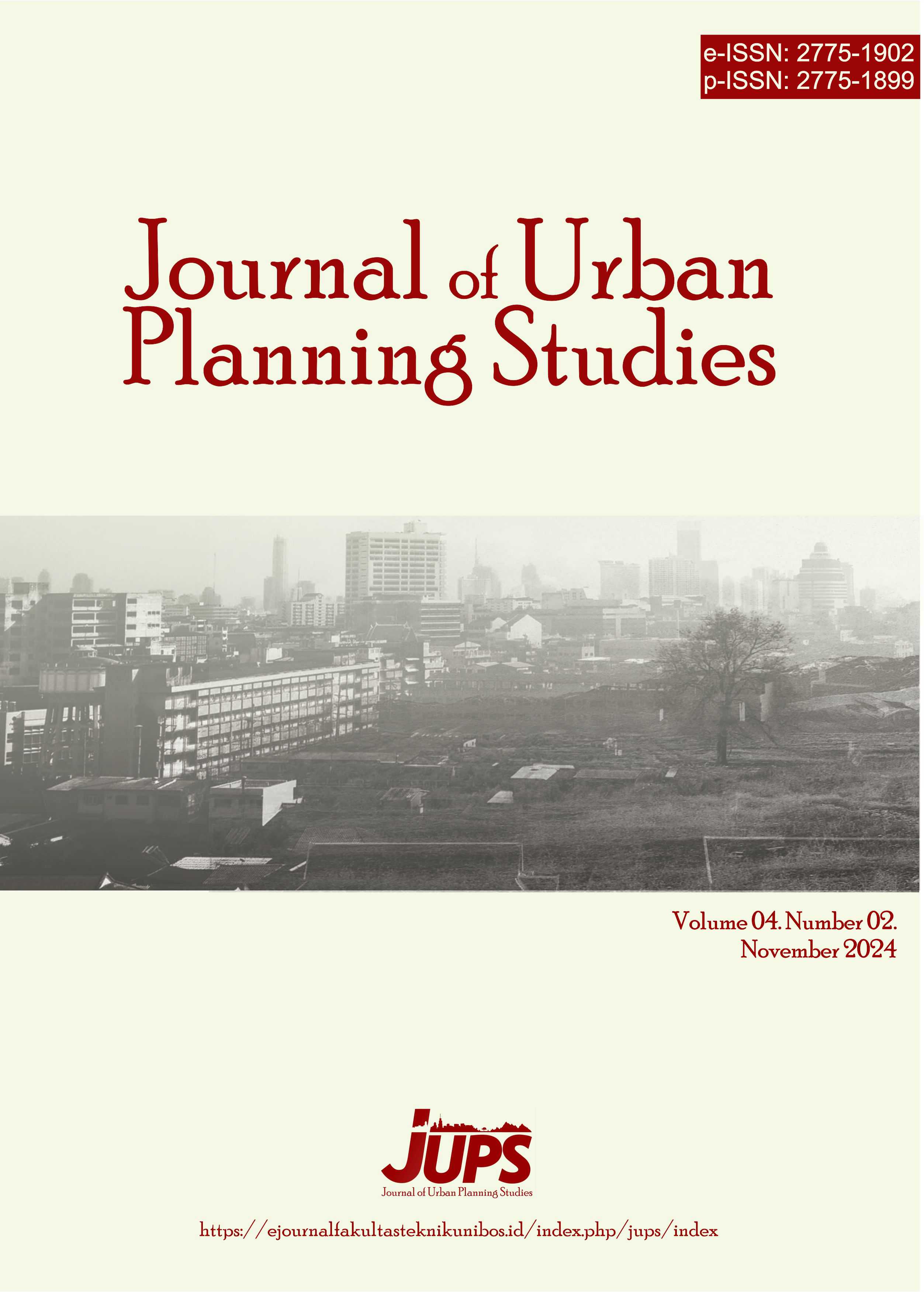Strategi Meningkaatkan Partisipasi Masyarakat Dalam Pembangunan Wisata Pantai Biru Di Kelurahan Tanjung Merdeka
DOI:
https://doi.org/10.35965/jups.v4i2.466Kata Kunci:
Partisipasi masyarakat, Chi-Squere, SWOT, Pembangunan WisataAbstrak
Abstract. The city of Makassar has various tourism potentials, including one of the tourist attractions on the Blue Beach. Blue Beach is located in Tanjung Merdeka Village, Tamalate District, Makassar City, South Sulawesi. Communities in Blue Beach tourism have been given the opportunity as well as the trust to manage the Blue Beach tourist attraction with the capabilities of each group or individual related to tourism. Even though the opportunities provided are very broad, the community still lacks the will and ability to develop related activities. The purpose of this study was to determine what factors influence community participation in the development of blue beach tourism and also to determine the form of community participation strategies in the development of blue beach tourism in Tanjung Merdeka Village, Makassar City.The research method used to determine the factors that influence community participation in the development of blue beach tourism is using chi-square analysisWhile the method used to determine the form of community participation strategy in the development of blue beach tourism is SWOT analysis(Strangths, Weaknesses, Opportunities, and Threats). Based on the results of the analysis carried out, it is known that the factors that have a strong influence on community participation in the development of blue beach tourism are the factors of the opportunities provided by the community and the willingness of the community to participate.The form of the strategy set out in this paper is to use the SO strategy or take advantage of the strengths you have to optimize the opportunities that exist.
Abstrak. Kota Makassar memiliki potensi pariwisata yang bervariasi, termasuk salah satu objek wisata yang ada di Pantai Biru. Pantai Biru terletak di Kelurahan Tanjung Merdeka, Kecamatan Tamalate, Kota Makassar, SulawesiSelatan. Masyarakat di wisata Pantai Biru telah diberi kesempatan sekaligus kepercayaan untuk mengelola objek wisata Pantai Biru dengan kemampuan dari masing – masing kelompok atau perseorangan yang berkaitan dengan kepariwisataan. Walaupun kesempatan yang diberikan sangat luas tetapi masyarakat masih minim kemauan dan kemampuan untuk mengembangkan kegiatan terkait. Tujuan penelitian ini adalah untuk mengetahui faktor-faktor apa saja yang mempengaruhi partisipasi masyarakat dalam pembangunan wisata pantai biru dan juga menetapkan bentuk strategi partisipasi masyarakat dalam pembanguanan wisata pantai biru di Kelurahan Tanjung Merdeka Kota Makassar.
Metode penelitian yang digunakan untuk mengetahui faktor-faktor yang mempengaruhi partisipasi masyarakat dalam pembangunan wisata pantai biru adalah menggunakan analisis chi-square
Sedangkan metode yang digunakan untuk menetapkan bentuk strategi
partisipasi masyarakat dalam pembangunan wisata pantai biru adalah analisis SWOT (Strangth, Weakness, Opportunities, dan Threats).
Berdasarkan hasil analisis yang dilakukan diketahui bahwa faktor yang yang berpengaruh kuat partisipasi masyarakat dalam pembangunan wisata pantai biru yaitu faktor adanya kesempatan yang diberikan masyarakat dan kemauan masyarakat dalam berpartisipasi.
Adapun bentuk strategi yang ditetapkan dalam penulisan ini adalah menggunakan strategi SO atau memanfaatkan kekuatan yang dimiliki untuk mengoptimalkan peluang yang ada.
Kata Kunci : Partisipasi masyarakat, Chi-Squere, SW
Referensi
Aprillia Theresia dkk, Pembangunan Berbasis Masyarakat, Bandung, Alfabeta, 2014
Danang, Sunyoto. (2013). Metodologi Penelitian Akuntansi. Bandung: PT Refika Aditama Anggota Ikapi.
Hadi, Sutrisno. 2000. Analisis Regresi.Yogyakarta: Andi Offset.
Idris Taking, M., Mokoginta, A., & Latief, R. (2021). Strategi Pengembangan Potensi Obyek Wisata Pulau Sanrobengi Kabupaten Takalar. Journal of Urban Planning Studies, 2(1), 066-075.
Kementrian Pariwisata. (2009). Undang-Undang Republik Indonesia No. 10 Tahun 2009
Ruslan, R., Ike Nurhikmah, A., & Salim, A. (2021). Strategi Pengembangan Obyek Wisata Air Terjun Lacolla Kabupaten Maros: Lokasi Studi Dusun Malaka, Desa Cenrana Baru, Kecamatan Cenrana. Journal of Urban Planning Studies, 2(1), 076-084.
Silaen, S. (2018). Metodologi Penelitian Sosial untuk Penulisan Skripsi dan Tesis. Bogor: In Media.
Slamet, Margono,1985. Peranan Mahasiswa Kuliah Kerja Nyata dalam Pembangunan Pedesaan dan Perubahan Sosial, Universitas Lampung, Bandar Lampung. dalam Chaerunnissa, Chika,2014. Partisipasi Masyarakat dalam Program Penyediaan Air Minum dan Sanitasi Berbasis Masyarakat (Pamsimas) di Kabupaten Brebes (Study Kasus Desa Legok dan Desa Tambakserang Kecamatan Bantarkawung. Universitas Diponegoro Semarang. Vo. 5, No.2, Oktober 2014.
Sugiyono. (2018). Metode Penelitian Kuantitatif. Bandung: Alfabeta
Sugiyono. (2009). Metode Penelitian Kuantitatif Kualitatif dan R & D. Bandung: Alfabeta.
##submission.downloads##
Diterbitkan
Cara Mengutip
Terbitan
Bagian
Lisensi
Hak Cipta (c) 2024 Dwi Cantika Batary Prisilla, Kamran Aksa, Muhammad Indris Taking

Artikel ini berlisensi Creative Commons Attribution 4.0 International License.













